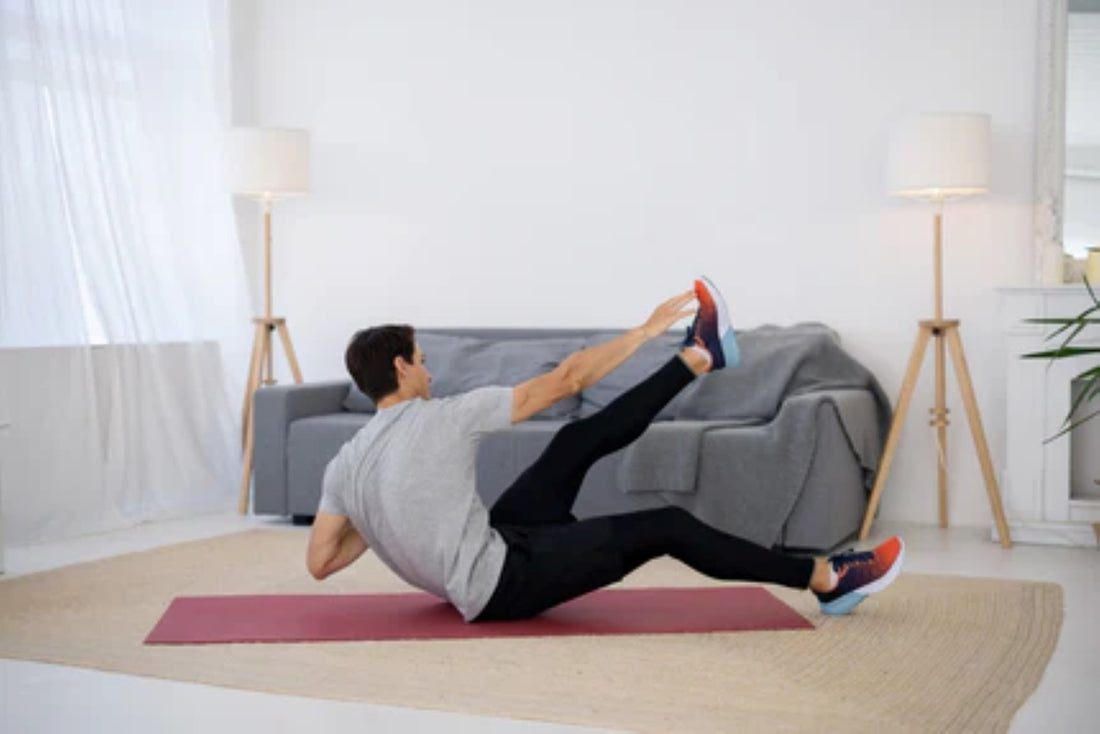
Many people enthusiastically embark on a mission to sculpt their abs but often find themselves stymied by an unexpected and rather unpleasant obstacle: back pain. Why do ab workouts hurt my back? This common query doesn't have a one-size-fits-all answer, as it requires understanding multiple factors ranging from improper technique to underlying health issues. This article aims to clarify these reasons and provide actionable solutions to perform ab workouts without compromising your back health.

The Anatomy of Your Core: More Than Just Your Abs
To comprehend why ab workouts might be causing back pain, it's essential to first understand the anatomy involved. Your core consists of much more than just your abdominal muscles. The core is an intricate network of muscles that include the transverse abdominis, rectus abdominis, obliques (internal and external), and the muscles in your back, such as the erector spinae. Neglecting any part of this network can lead to imbalances and, consequently, pain.
Common Mistakes That Hurt Your Back
The way you perform ab exercises has a significant impact on whether they help or hurt your body. Here are some common mistakes:
- Poor Form: Incorrect form is one of the primary culprits. For example, during a crunch or sit-up, if you put too much strain on your lower back by arching it, you're setting yourself up for discomfort.
- Overarching or Hyperextending: When you arch your lower back excessively, it places undue stress on the lumbar spine. This is a common issue with exercises like leg raises or planks.
- Neglecting the Lower Back: Weak lower back muscles can result in an imbalance, putting unnecessary pressure on this area during ab workouts.
- Not Engaging the Core: Failure to engage your core properly shifts the workload to other muscles, like the lower back.
The Role of Pelvic Tilt
Pelvic tilt can make or break your ab workout. Anterior pelvic tilt (pelvis tilting forward) can place additional stress on the lumbar spine. Conversely, a posterior pelvic tilt (pelvis tilting backward) helps to engage the core properly and takes pressure off your back. Ensuring that your pelvis is in the correct position during exercises can significantly mitigate back pain.
Strengthening the Entire Core for Better Balance
Achieving a balanced core entails strengthening not only your abs but also your back muscles and pelvic floor. Exercises such as planks, deadbugs, and bird dogs ensure that you're working all sides of your core, thus maintaining the harmony required for a pain-free workout. Adding in hip bridges can also help strengthen your lower back and glutes, which in turn supports the core better.
Understanding Flexion vs. Extension
It's also crucial to differentiate between spinal flexion and extension:
- Spinal Flexion: This includes movements like crunches and sit-ups. Performing too many of these can exacerbate back pain, especially if done incorrectly.
- Spinal Extension: Exercises like back extensions can counteract the issues caused by excessive flexion. These motions help to balance muscle strength around the spine.

Take a Break and Listen to Your Body
If you find yourself frequently asking, "Why do ab workouts hurt my back?", it might be time to take a step back and listen to your body. Ignoring pain can lead to more severe injuries. Rest, recovery, and perhaps a visit to a healthcare professional can provide critical insights into whether you're dealing with a more complicated issue like a herniated disc or muscle strain.
Consulting a Professional
When in doubt, it's always a good idea to consult a fitness expert or physical therapist. These professionals can offer personalized advice, evaluate your form, and design a workout plan that caters to your body's specific needs. They can also advise you on any pre-existing conditions that might be contributing to your back pain.
Incorporating Technology: Monitoring Your Form
With today's tech advancements, you can incorporate gadgets like posture-correcting devices or fitness apps that monitor your form during workouts. Some of these tools provide real-time feedback, helping you adjust your posture and technique instantly.
Exercise Modifications and Alternatives
Here are some ways to modify traditional ab exercises to make them more back-friendly:
- Swiss Ball Crunches: Using a Swiss ball can help you maintain proper form and reduce strain on your back.
- Bent-Knee Leg Raises: Bent knees put less stress on the lower back than straight legs.
- Modified Planks: Instead of high planks, try low (forearm) planks or side planks for less stress on your spine.
Sample Ab Workout Routine
Here's a balanced, beginner-friendly routine that targets the entire core:
- Plank: 3 sets of 30 seconds
- Bicycle Crunches: 3 sets of 15 reps per side
- Leg Raises with Bent Knees: 3 sets of 12 reps
- Bird Dog: 3 sets of 10 reps per side
- Hip Bridges: 3 sets of 15 reps
Final Thoughts
Experiencing back pain during ab workouts is not uncommon, but it is preventable. By understanding the interconnected anatomy, avoiding common mistakes, and performing exercises with proper form and balance, you can enjoy a pain-free journey to a stronger core. When in doubt, never hesitate to seek professional advice to ensure you're on the right path.
















